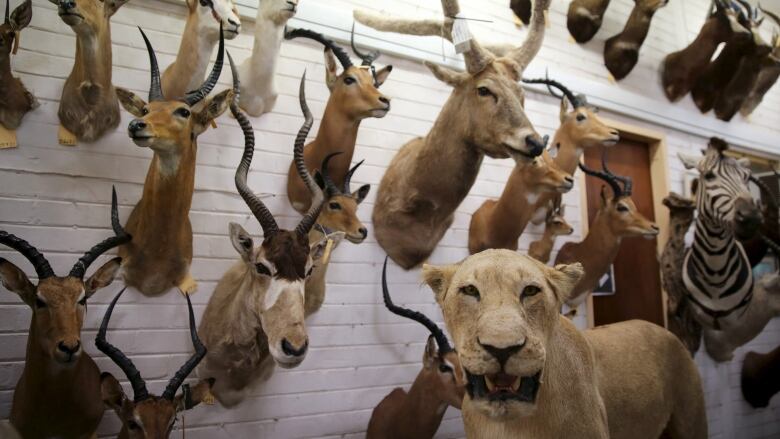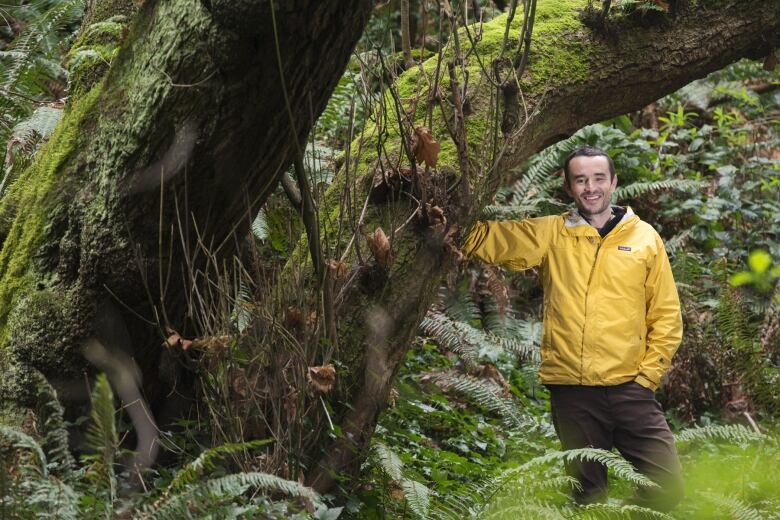Humans are 'superpredators' like no other species
Fishing, hunting conservation strategies are unsustainable, study suggests

Humans are predators so unique and extreme that they are "superpredators" in a class apart from other carnivores, a group of Canadian scientists says.
Andhunting and fishing patterns among animals show thathuman hunting and fishing conservation regulations may be the exact opposite of what is sustainable, the B.C. researchers say.
By comparingthe hunting and fishing habits of other predators around the world to those of humans, the researchersrevealed some very unusual behaviours, most remarkably:
- While most predators kill and eat mainly juveniles, humans target largely adults.
- Unlike other predators, humans prey on many large carnivores such as bears and lions.
"They are a predator of predators," said Chris Darimont, lead author of a new study describing the analysis, "and actually a very extreme predator not only of predators, but pretty much anything with edible flesh on this planet."

The study, published today in Science, found that humans hunt and fish adult prey at a rate that is up to 14 times higher than the median rate forother predators.
"The magnitude of this difference was our first surprise," said Darimont, the Hakai-Raincoast professor of geography at the University of Victoria and science director for the Raincoast Conservation Foundation, at a media teleconference organized by the journal Science.
The difference was most extreme for two types of human prey: fish and large predators.
- Cecil the lion killing raises issues about trophy hunting in Canada
- 710-lb. tuna caught in Conception Bay with rod and reel
Shrinking fish
That's unsustainable, the researchers say, andhas resulted in some drastic impacts populations of many large carnivores such as lions, tigers and wolves are dwindling. Some fish stocks worldwide have collapsed, and the fish that remain are getting smaller and maturing earlier than they used to, producing less offspring, as human fishing practices drive their evolution.
- Some fish species may never bounce back, says study
- Overfishing of Atlantic by EU nations continues, studies show
"Humanity, in fact, selects for traits that are undesirable to humans smaller fishes, fishes that produce less offspring, shrunken horns [in bighorn sheep]," said Darimont.
The researchers recommend:
- Reducing human hunting and fishing rates to levels more comparable to those of other predators an 80 or 90 per cent reduction.
- Changing conservation regulations to target young fish and animals instead of adults.
University of Victoria biology professor Tom Reimchen, who co-authored the paper, acknowledged that reducing hunting and fishing by that much will be "very challenging," aswill shifting commercial fisheriesto capture juveniles instead of adults, given current fishing methods.

But the researchers said there are already examples of fisheries that do this, such as the Newfoundland lobster fishery, which sets traps with openings too small for large lobsters to enter. The researchers also cited the traditional indigenous herring roe fishery on the Pacific Northwest coast, where herring lay huge quantities of eggs on kelp near the shore each year. The kelp and eggs were collected by First Nations people, while leaving the adults unharmed to come back and lay more eggs the next year.
On a personal level,Darimontsayswhen you go fishing, it's best to let "the big one" go and keep smaller fish insteadwhen allowed by regulations, which often ban juveniles from being hunted or fished at all.
Reimchen first came up with the idea of comparing humans to other predators while conducting research at a lake on B.C.'s Haida Gwaii islands in the 1970s. There, 22 species of predators, including otters, loons, trout, and grebes, preyed mainly on a single species of stickleback fish. Despite all the predators, the stickleback population remained stable because the predators almost exclusively ate the juveniles, leaving the reproductive adults to produce large quantities of more young each year.
Interest vs. capital
"The predators were consuming primarily the reproductive interest rather than the reproductive capital," Reimchen said at a media teleconference organized by Science.
In fact, Darimont said, fish and animals have evolved strategies for reproduction specifically to deal with predation of their young.

"As fishes age, they become more fecund they produce more eggs, produce more babies and in many cases, many of those babies are more likely to survive and reproduce themselves."
Reimchen noticed that natural predators' tendency to target juveniles was the opposite of commercial salmon and herring fisheries, which targeted mainly adult, reproductive-age fish.
He wondered how widespread these differences between human hunting and fishing habits and those of other predators might be.
Over seven years, he worked with Darimont a former PhDstudent and two other former students to comb through scientific papers and hunting and fishing management reports to collect and analyze dataon 400species of predators around the world.
"Fundamentally," Darimont said, "our hopes for this paper is that when society thinks of predators, they no longer exclusively think about wolves and lions or maybe even spiders, but they understand that our own species is not only a predator, but a dominant one."












_(720p).jpg)


 OFFICIAL HD MUSIC VIDEO.jpg)
.jpg)



























































































